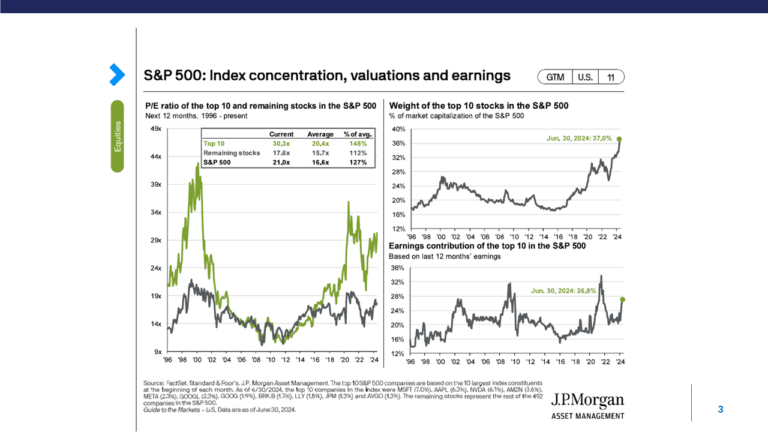When do you hope to retire? If you’re like most people, you plan to stop working sometime between the age of 60 and 67. That means the years leading up to retirement will likely be your peak earning period. Consequently, you may find yourself in a high tax bracket just before you retire, only to move into a lower tax bracket once you start living off your savings. It’s a misconception, however, to assume that your taxes will never go up again.
In fact, there are two reasons why you might be surprised by high taxes late in life: 1) required minimum distributions and 2) Social Security payouts. Fortunately, there’s a planning strategy that can help minimize taxes during your golden years. It’s called a Roth conversion. Before we explain what that entails, let’s review the two factors that may impact your retirement tax burden.
Factor 1: Required Minimum Distributions
Federal tax law requires retirees to begin taking withdrawals from qualifying retirement accounts by age 72. These withdrawals are known as required minimum distributions (RMD), and a qualifying account is any employer-sponsored retirement plan, such as a 401(k), as well as any traditional individual retirement account (IRA). If you’ve accumulated substantial pre-tax retirement savings, the RMDs you withdraw will mean a corresponding increase in your taxable income.
Factor 2: Social Security Payouts
Did you know that if you hold off on drawing Social Security, you can reward yourself later with a higher annual benefit? Thanks to delayed retirement credits, waiting a few years past age 62 can be a definite advantage. For every month you postpone filing for Social Security benefits, you’ll earn a credit. After you turn 70, however, you won’t have any financial incentive to delay your payout. That’s because age 70 is the official cut-off period for earning delayed retirement credits.
However, once you start collecting Social Security, it’s possible that up to 85% of your benefits will become taxable. Depending on your total income, including RMDs, you might find yourself in a tax bracket as high as 24%.
So how can you avoid this excessive tax burden? With a tax-saving strategy that not everyone knows about: a Roth conversion.
From Tax-Deferred to Tax-Free With a Roth IRA
One of the most powerful ways to maximize your retirement income is through a Roth conversion, which leverages the tax advantages of a Roth IRA, a specific type of individual retirement account.
A Roth IRA allows you to invest after-tax dollars. Your contributions and earnings then grow tax-free. As long as the account has been open for five years, you can begin withdrawing the funds tax-free after you turn 59½.
Through a Roth conversion, you can move funds from a qualifying tax-deferred retirement account, such as a traditional IRA or 401(k), into a tax-free Roth IRA. In accordance with tax laws regulating both pre-tax retirement accounts and Roth IRAs, you’re required to pay income tax on the money you transfer. But if you time the transfer strategically, the tax you pay is at a lower rate compared to what you would pay if you were drawing income from a traditional pre-tax retirement account later in retirement.
For many people, the initial stage of retirement can be a great time to do a Roth conversion. Think of your marginal tax rate as a horseshoe. It’s high during your working years, and then it can drop as soon as you retire and continue to stay low for a few years. Your tax rate can start to climb up again as soon as you reach your early seventies. The bottom of the horseshoe represents one of your strongest opportunities to explore a strategy like a Roth conversion.
During retirement, any qualified withdrawals you make from Roth IRAs are completely tax-free. The funds can’t be taxed, and neither can their future growth. There are no minimum distribution requirements either. By doing a Roth conversion as you begin retirement, you can ease your tax burden during what should be a carefree time in your life. And if you’re focused on the really long-term future, consider that a Roth IRA will also maximize the amount of wealth you can leave for your beneficiaries after you die.
Pay Less Now or Pay More Later
Let’s look at two different scenarios to understand how a Roth conversion works.
When Jenny retires, her marginal income tax bracket falls to 12%. She knows it’s projected to increase to 22% within a few years, so she decides to convert $30,000 out of her traditional IRA and move it into a Roth IRA. As a result of the conversion, she has to pay a $3,600 tax bill, but will owe nothing on the money (or any of its earnings) when she withdraws it down the road, even if she’s in a higher tax bracket..
Bill is also newly retired. Like Jenny, he’s relieved to know he’ll pay income tax at a low rate of 12% until his 72nd birthday. His tax rate is also projected to soar to 22% several years from now, but he’s not worried. Unlike Jenny, he chooses to leave his retirement assets right where they are—in a regular IRA. His dreams include buying a summer home for his family. However, he doesn’t realize that by dipping into his IRA at age 75 to make a $30,000 down payment, he’ll end up owing $6,600 in taxes on the money he withdraws.
We May Not Know the Future, But We Can Still Plan for It
There’s no crystal ball to tell us what federal tax brackets will look like decades or even years from now. But it’s certainly possible to make some educated guesses based on what we know today.
At Level, when we bring you on as a new client, we use sophisticated modeling software to create a long-term projection of your tax rates for the rest of your life based on all currently known variables. We know that our projections will never be 100% accurate; there can be a lot of surprises and unexpected events during a 10-, 20-, or even 30-year retirement. That’s why we stay committed and help you with any needed adjustments, especially if your financial outlook changes. We continually optimize every client’s unique financial picture in real time.
Wondering if a Roth conversion fits your retirement tax strategy?
Talk to a trusted financial advisor before making any decisions. Feel free to reach out to us with any questions you may have or to discuss your retirement goals and concerns. Click here to set up a free consultation or call 716-634-6113.
About Level Financial Advisors
Since 1979, Level has helped countless individuals and families in the greater Buffalo area retire with dignity, achieve their financial goals, manage their wealth, minimize taxes, and leave behind a legacy. And unlike other so-called financial “advisors,” our CERTIFIED FINANCIAL PLANNER™ professionals are fiduciaries in the truest sense. We aren’t compensated for the products we sell, and we don’t work on commission, so you can be confident our advice is in service of your goals—not our own bottom line.


